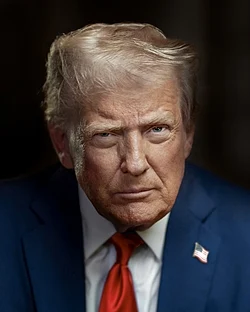WASHINGTON, Aug 8 (The Border Line) —
U.S. President Donald Trump has issued an executive order imposing a sweeping 50% tariff on all Indian goods entering the U.S.—doubling current duties with an added 25% surcharge. The announcement, confirmed by official White House communications, comes as part of a dramatic escalation in U.S.-India trade tensions. [Source: Al Jazeera]
The new tariff regime is set to take effect on August 27, 2025. Importers have under three weeks to reroute, expedite, or renegotiate their shipping plans before the rate hike hits. [Source: BBC]
Citing India’s ongoing imports of Russian crude oil, Trump stated the move was necessary to pressure New Delhi “to stop indirectly funding the war in Ukraine.” He argued that trade leverage is justified as a response to India’s elevated energy ties to Moscow—even as many U.S. companies remain engaged with India’s market. [Source: CNN]
The order relies on the International Emergency Economic Powers Act (IEEPA) and amendments to the Trade Act of 1974, both of which legally empower the president to impose trade penalties in defense of U.S. national security. Legal experts note that such measures, while uncommon at this scale, have precedent and do not directly breach current WTO obligations if justified under security exceptions.
Indian officials strongly condemned the tariffs as “unfair, discriminatory, and damaging to decades of bilateral cooperation.” In a media briefing, the commerce ministry signaled India could challenge the move in WTO forums, but for now urged the U.S. to reconsider in the interest of global trade stability. [Source: Indian Express]
Leading Indian export sectors—especially textiles, seafood, pharmaceuticals, auto parts, and electronics—face immediate risks as U.S. buyers look elsewhere to avoid surging import costs and logistical uncertainty.
The seafood industry, in particular, stands to lose roughly ₹24,000 crore in export value, according to preliminary government and industry projections, as price-sensitive U.S. buyers turn to other countries.
Observers have raised questions over selective enforcement, noting that China—despite also importing Russian crude—faces a lower average tariff (~30%) on many goods. Trade experts suggest this disparity reveals a strategic, not purely legal, logic to the new U.S. policy.
Trump’s order includes a flexibility clause, allowing for revisions, suspension, or further escalation depending on subsequent actions by New Delhi or the international situation.
The dramatic tariff escalation is the latest sign of intensifying global trade tensions—and could trigger a wider diplomatic rift or “tit-for-tat” retaliation if neither side yields in the weeks ahead.
